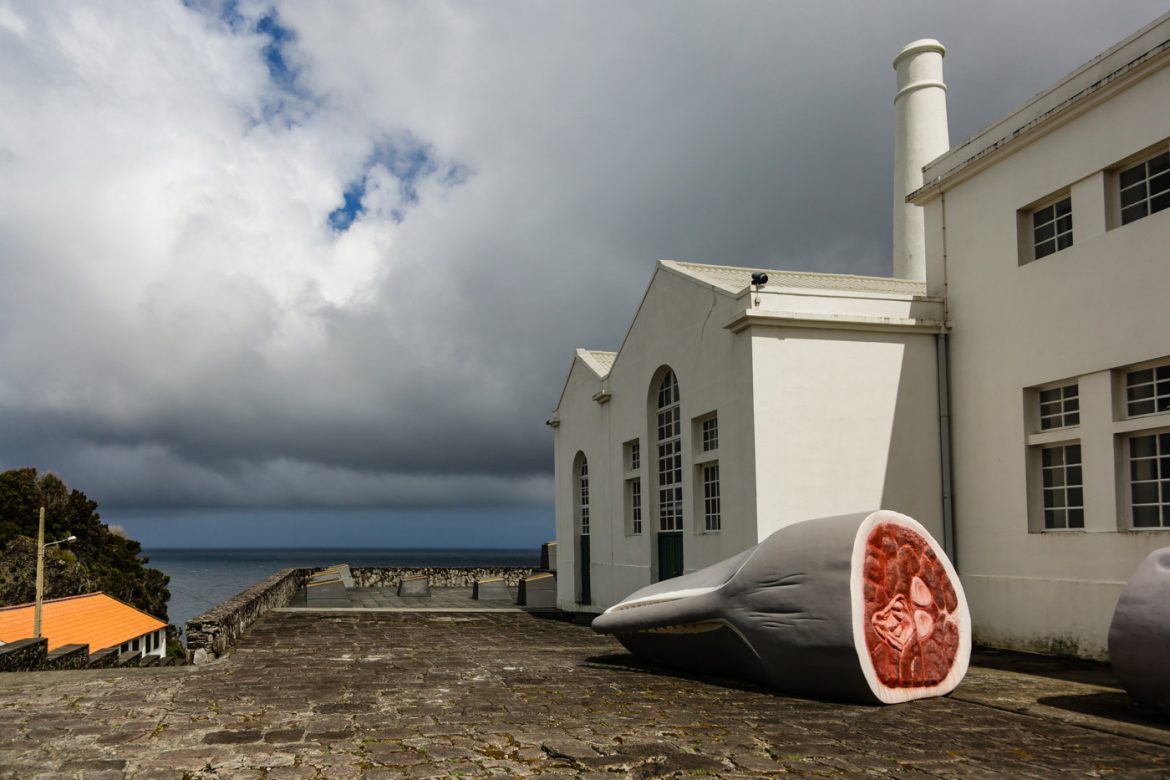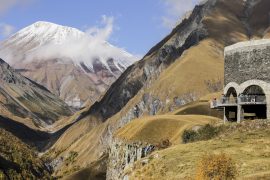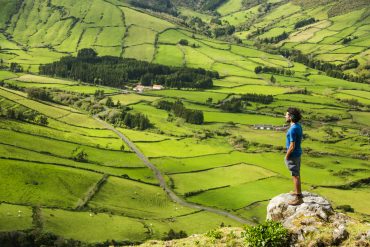There are many reasons why tourists are heading to the Azores, and no one can deny that one of them is the opportunity to go whale watching throughout the archipelago. Besides the whales, there are other cetaceous that can be viewed off the shore, such as several species of dolphins. The reason why the Azores is one of the best places to spot whales is because, besides being located on the migratory route of many species, the waters of the Azores are also home to the sperm whale that lives there year-round. At all, there are at least 28 different species of cetaceans the can be spotted around the islands.
How it is, there is no telling, but islanders seem to make the best whalemen.
Herman Melville, Moby Dick
The Azores has been closely bound to whales for several centuries, but not always in such a a positive and peaceful way, as is the case today. For centuries, whales were hunted by a population who had very little means to make a living out of other resources.
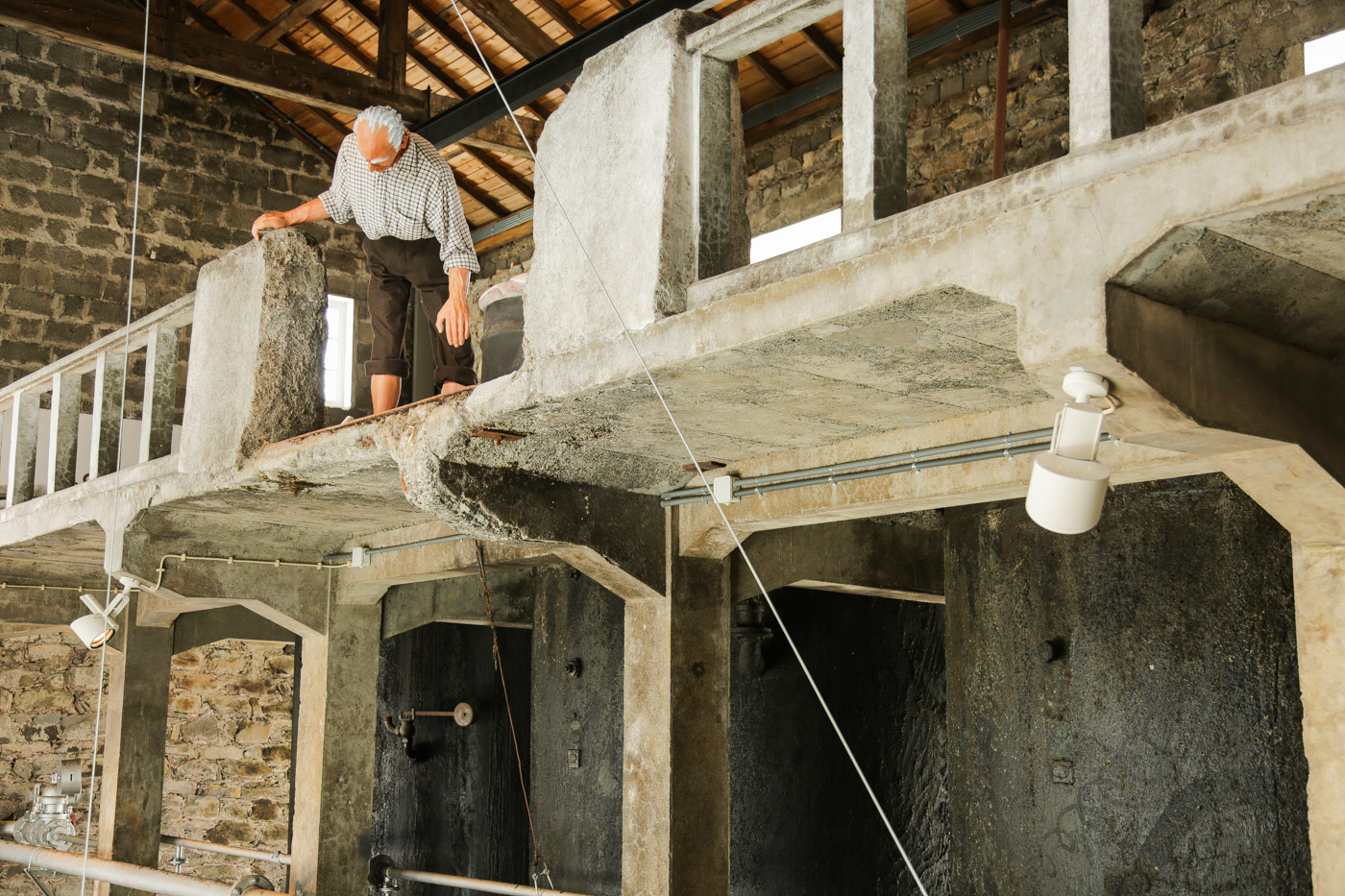
In order to understand more about the old whale hunting industry, we visited some of the whale museums in the Azores. The ones we went to, and can recommend a visit, are the following two:
Museu da Fábrica da Baleia do Boqueirão
This museum is located in an old whale factory, and it is very well presented, with several photos, films (L’empreinte du Harpon by Francis Lamolère), testimonials and tools. Information boards are both in Portuguese and English.
Entrance fee: 2.5 EUR
Location: Santa Cruz Das Flores, Flores Island
Open hours: 09h00 to 17h30 (closed on Mondays)
Museu da Indústria Baleeira
This museum is located in the old, restored boat houses, where whalers used to keep their boats. Again, this museum is very well presented, with photos, films, many tools and boards with information in Portuguese and English. There is also a collection of scrimshaw art in the first floor of the museum.
Entrance fee: 2 EUR
Location: Lajes do Pico, Pico Island
Open hours: 10h00 to 17h30 (closed on Mondays)
A short history of the whale hunting in the Azores
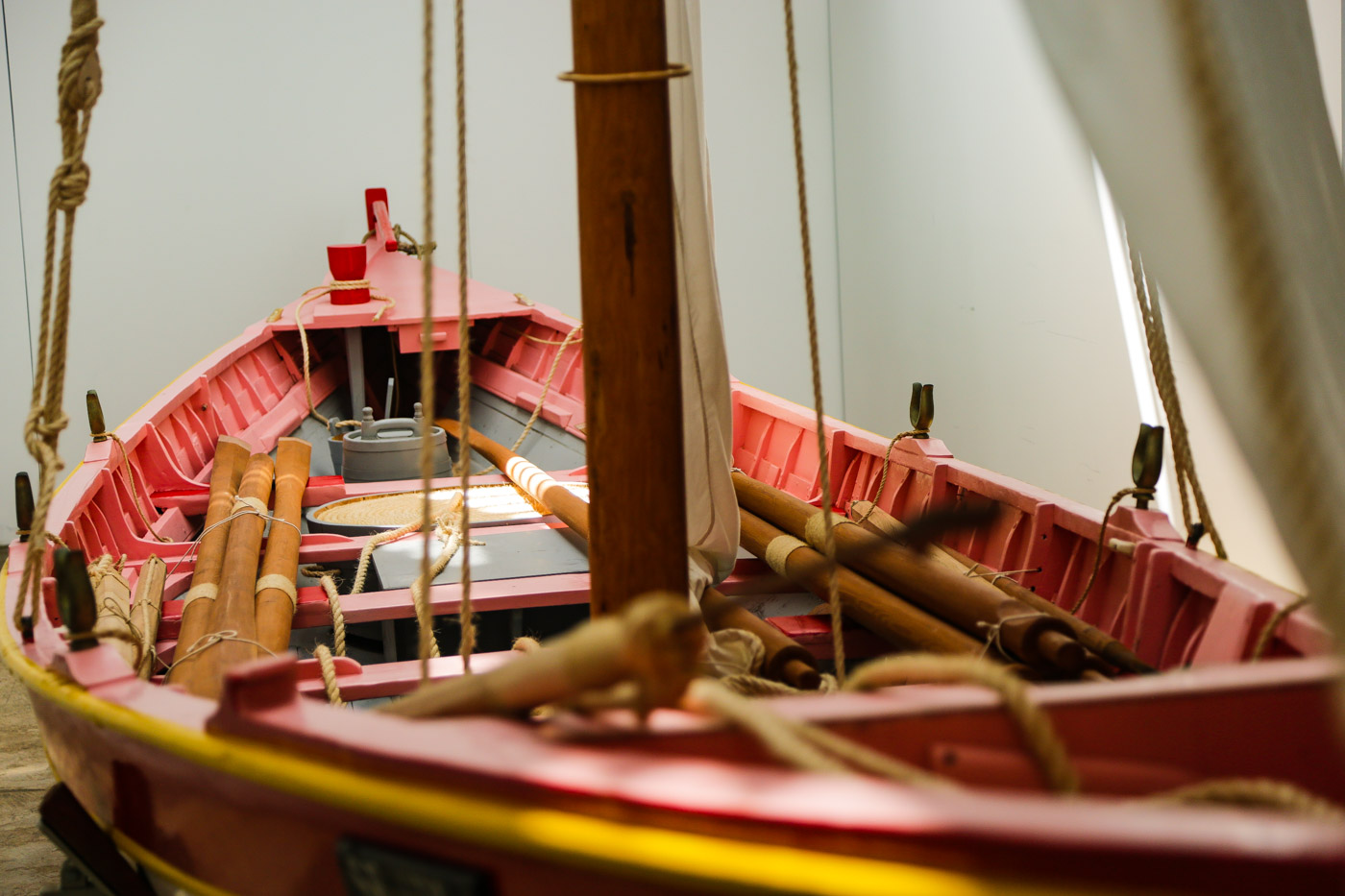
- The first boats to explore the Azores waters to hunt whales arrived to the islands in the XVIII century, coming from the Americas. They were the Yankee Whalers and used the islands as an harbour to reload water and food supplies. They served as an inspiration to the Azorean population.
- Later on, in the XIX century, Azorean fishermen and farmers joined the Yankee Whalers as a way to escape poverty and have more economic opportunities. With them they learnt the trade, and soon started hunting their own whales.
- Until the mid of the XX century the whale industry flourished in the Azores.
- After the 1960s the whale industry began to decline due to the rise of environmental movements and the simultaneous decline in the demand for whale oil.
- With European regulations prohibiting the capture of whales (1986) and the arrival of European funds to help promote the conservation of whales, the last whale is captured in 1987.
- Today, only Japan, Norway and Island maintain their whale hunting industry alive.
How was the whale hunting done in the Azores?
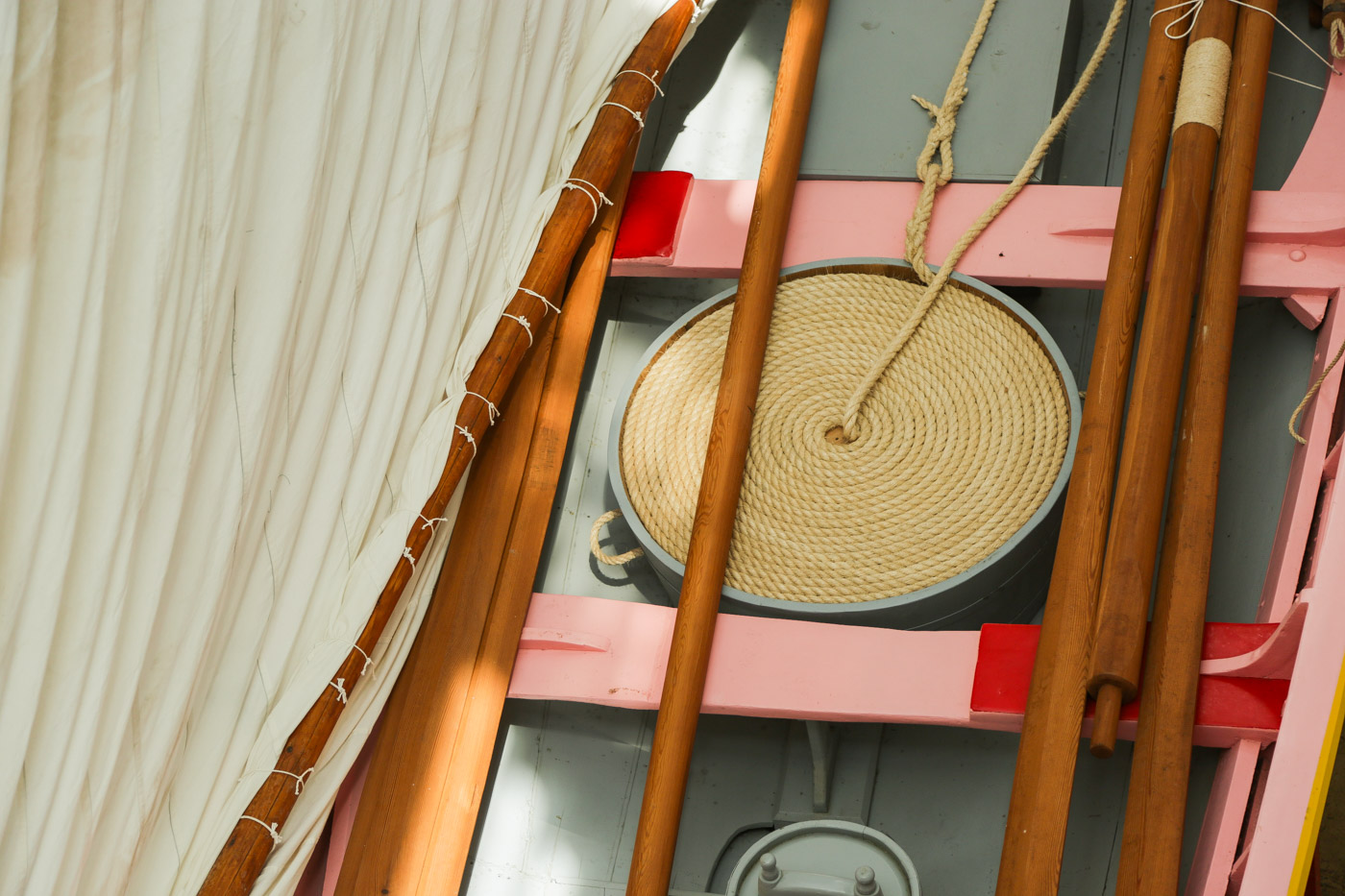
- The hunting of the whale started on the ground, with the lookouts going to their lookout refuges located in higher points throughout the island. They were equipped with binoculars and rockets to give a sign whenever they spotted the spout of a whale. Throughout the hunt, the lookout would communicate via signs (smoke or cloths, and much later, in the 1940s, via radiophone) giving indications about the trajectory of the whale.
- Once the sign was given, the men would leave their every day activities (whalers had other jobs, they could be farmers, fishermen or have any other main activity) and would assemble near the harbour to launch the boat.
- The boat then had to approach the animal (which used to mean that the seven men had to row with the oars or use the sail when possible (motor boats were only introduced in the 1920s).
- Once they got near the whale, one of the men (the one with the best skills at shooting) tried to hook the whale with the harpoon. What followed, if he hit the animal, was a chase that would last until the animal died or until the men quit out of exhaustion. This chase could last for hours.
- When the whale was finally dead, the men had to tow it to the harbour where the animal would be cut up before taken to the factory.
Why were whales hunted?
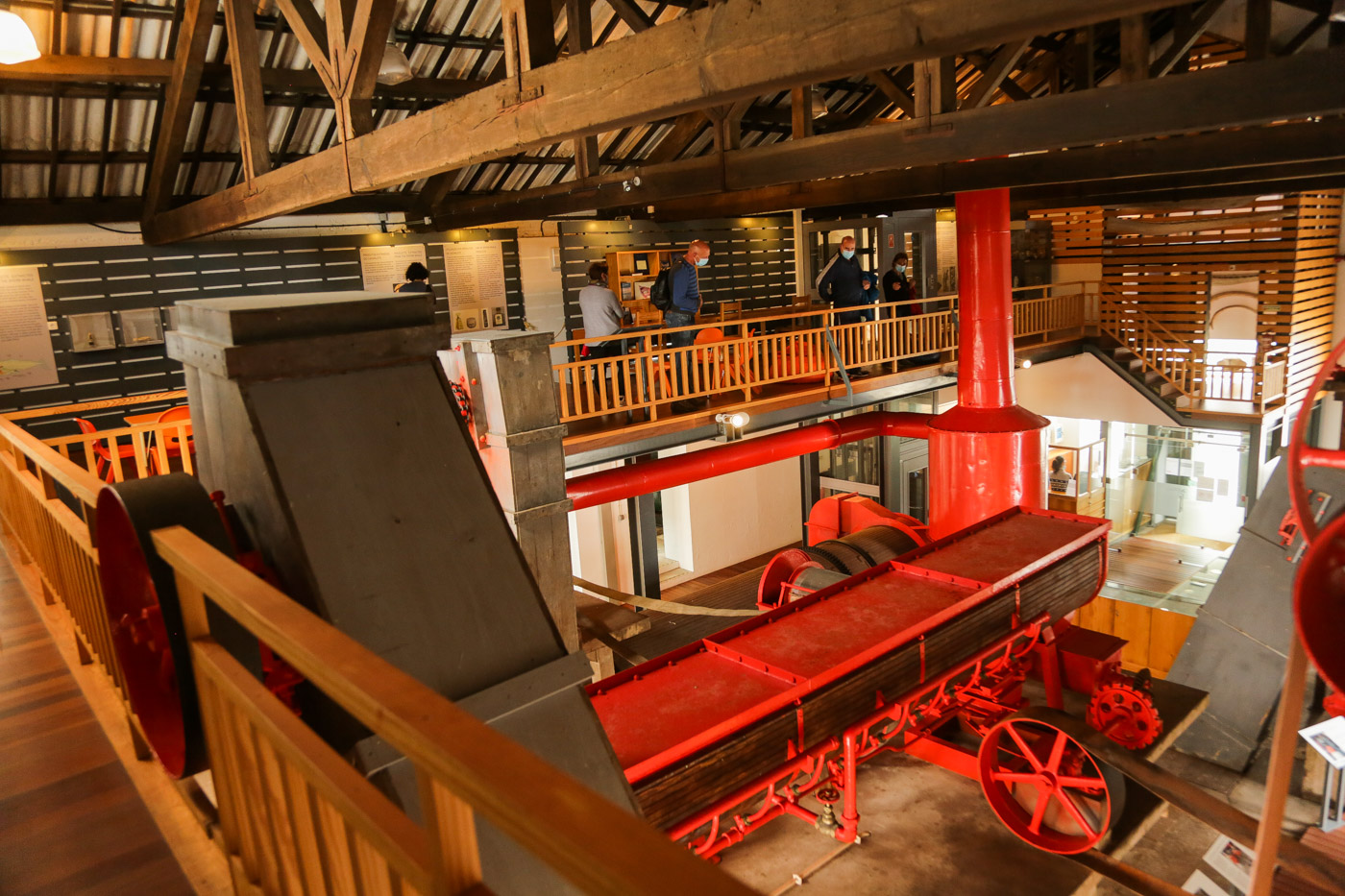
Contrary to what one might think, sperm whales were not hunted for food, because their meat was not considered tasty enough. The whale’s meat was processed and transformed into flour. Killing a whale was the equivalent to hunt tons of meat that could be transformed into flour. But, meat was only one of the part of the animal that was used:
- The whale’s blubber was processed into oil and used for oil lamps, soaps, lubricants;
- The whale’s meat and bones were mainly processed into flour, used to feed cattle;
- The whale’s amber (which is still very valuable) was used in the cosmetics/perfume industry;
- The whale’s teeth were used to make scrimshaw art;
- The whale’s tendons were used for making tennis racket strings and gelatine;
- The whale’s liver was used to extract vitamin A;
- The whale’s blood was used to produce glue;
- The whale’s skin was used to make shoes and handbags.
The whale factory in Santa Cruz Das Flores
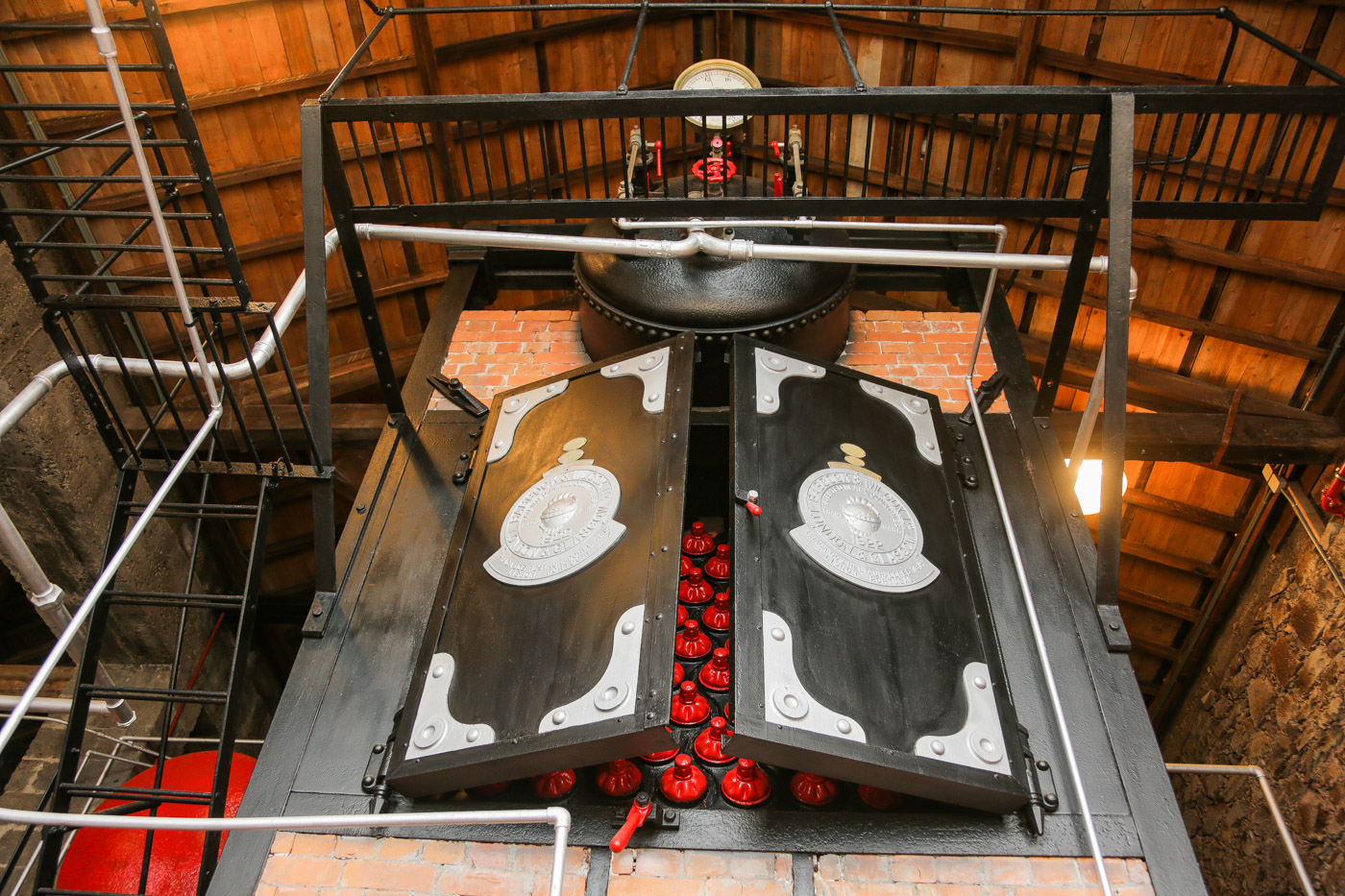
The whale museum in Flores is located inside the old whale factory. The building, together with the old machinery that is still there and is very well preserved, is the main axis of the museum. The equipment – which was once used in the transformation of blubber, meat and bones into oil and flour – is all there in its original place, giving us a good idea of what the factory looked like, and most important, giving a good idea of the importance of this industry in the island.
The sperm whale
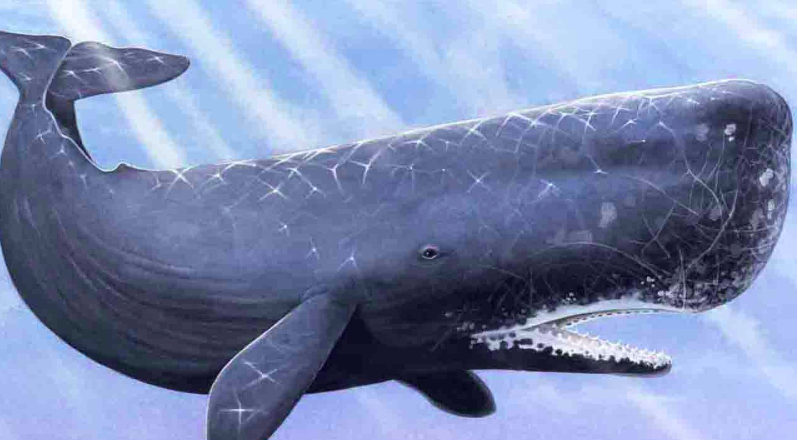
The sperm whale lives all year round in the seas surrounding the Azores. They move by using exclusively their caudal fin. Their normal speed is around 10 km/hour, but when escaping, their velocity can reach 40 km/hour. Their dives can last between 40 minutes (especially juveniles and females) to two hours (male adults). They usually dive to different depths, with females diving to depths between 300 to 600 metres (though they can reach 900 metres) and males diving deeper, to the 1,000 or 2,000 metres.
From Hunting to Whale Watching
The business has changed. Today, whales are not hunted to be killed. They are protected and important for the whale watching tourism. What remains there from the old activity?- The knowledge. Azorean whalers have learnt for centuries about whales' behaviour and know how to spot them better than anyone else.
- The lookouts. The same men who were once spotting whales to hunt them, are there today doing the same job, from the same high lookouts, giving directions to the whale watching boats.
- The factories. Most of the whale factories have been converted into museums and offer plenty of information about the whale hunt of former years, as well as information about cetaceans.
- The boats. Many villages have kept the old boats and use them on special occasions, such as popular festivities, where they compete in regattas.
If you are planning to visit Flores Island in the Azores, you should not miss our articles below:
- The Most Incredible Waterfalls in Flores, Azores
- The Seven Lagoons in Flores
- What to Visit in Flores, Azores
- The Best Hikes and Trails in Flores, Azores
Going to the other islands in the Azores? Don’t miss these articles:


